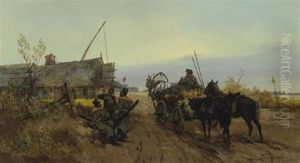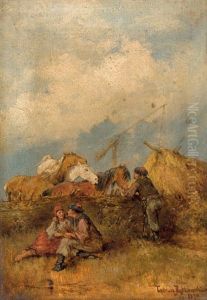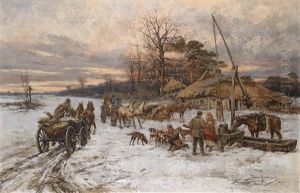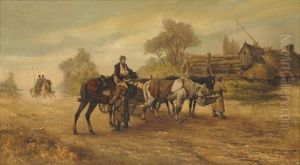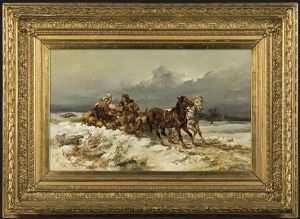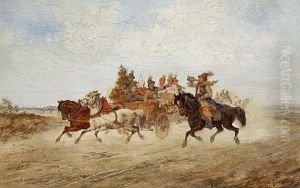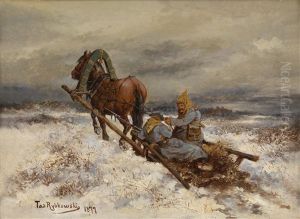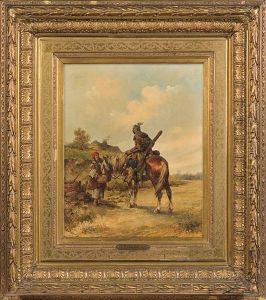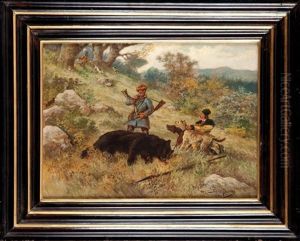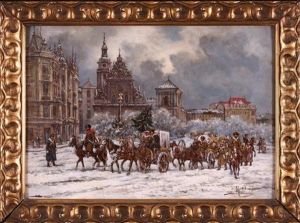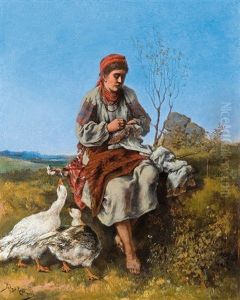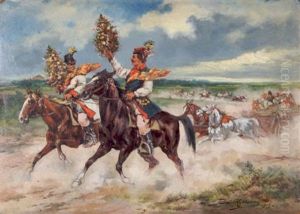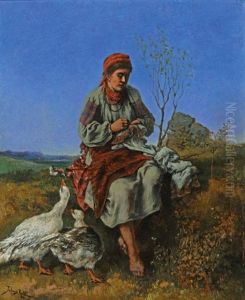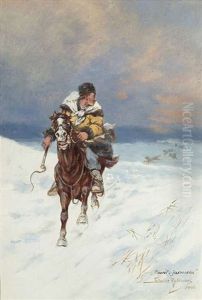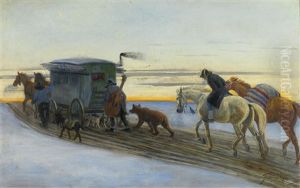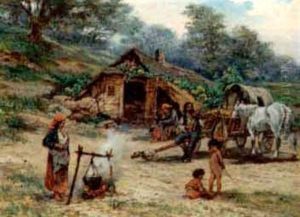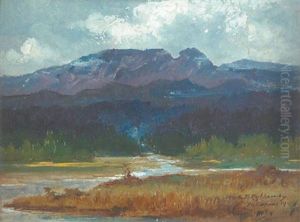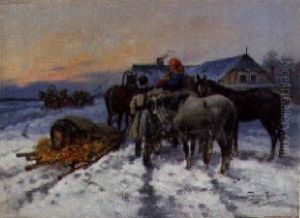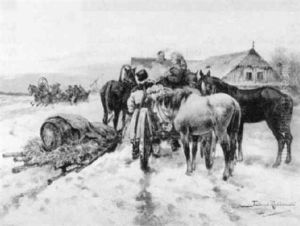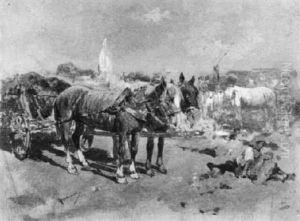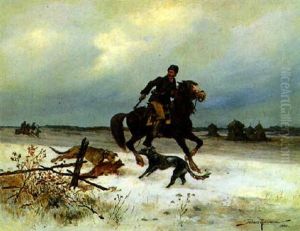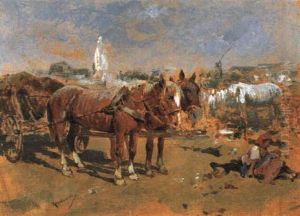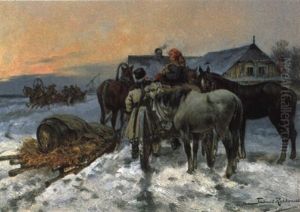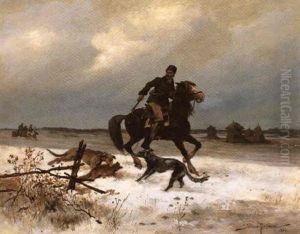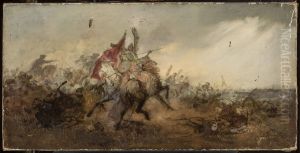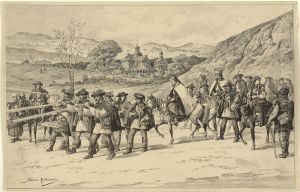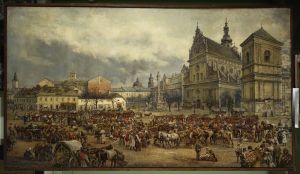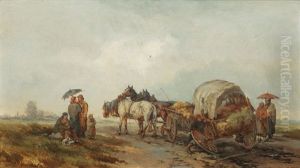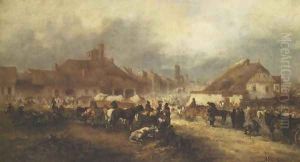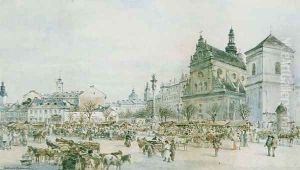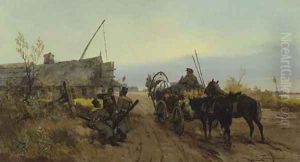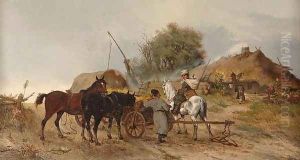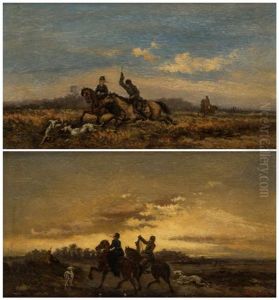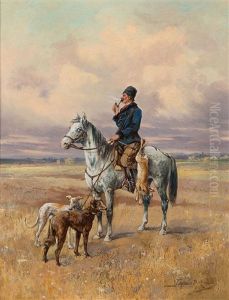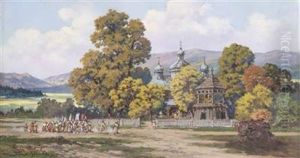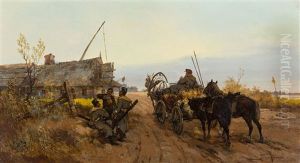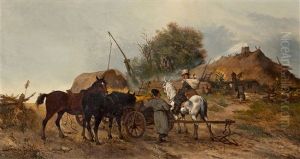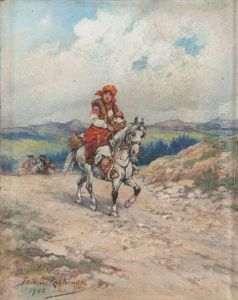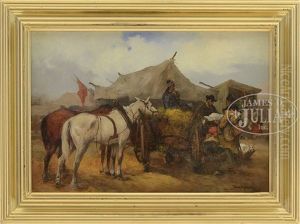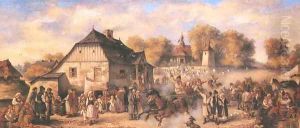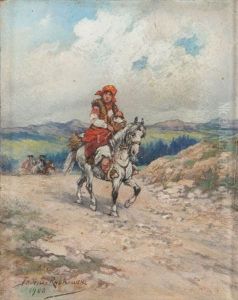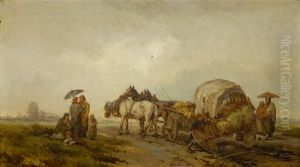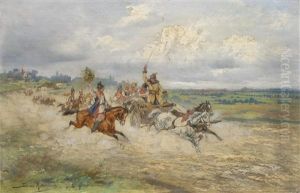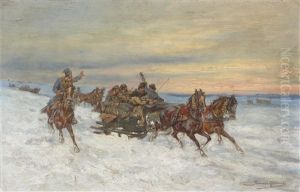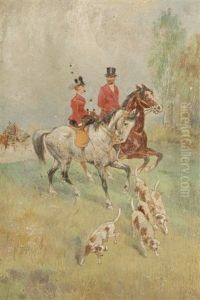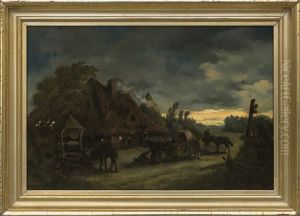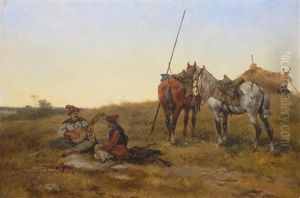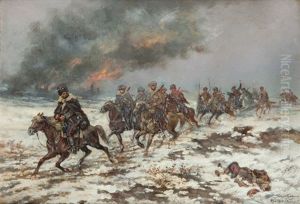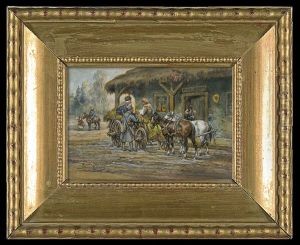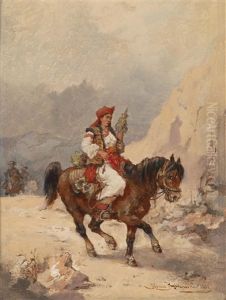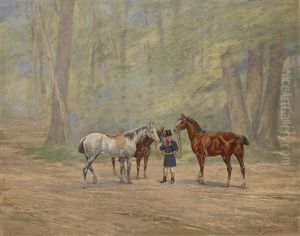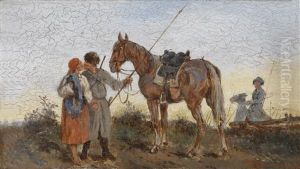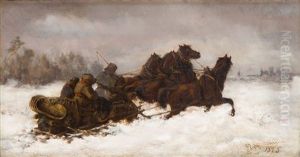Tadeusz Rybkowski Paintings
Tadeusz Rybkowski was a Polish painter, born on November 6, 1848, in Vilnius, which at that time was part of the Russian Empire and is now the capital of Lithuania. Influenced by the cultural backdrop of his time, Rybkowski developed an interest in the arts, specifically painting, from an early age. He pursued his passion for art by studying at the School of Fine Arts in Warsaw, where he honed his skills under the tutelage of well-known artists such as Wojciech Gerson, one of the most prominent Polish painters of the 19th century.
After completing his studies in Warsaw, Rybkowski continued his education at the esteemed Academy of Fine Arts in Munich, Germany. This experience further shaped his artistic style and prowess. Rybkowski's work was heavily influenced by the Munich school, which was known for its naturalistic and realistic approach to painting. His oeuvre includes a variety of subjects such as genre scenes, landscapes, and portraits. He is particularly noted for his depictions of Polish rural life, which capture the customs, culture, and spirit of the nation's peasantry with a sense of authenticity and empathy.
Rybkowski's art was well-received, and he gained recognition for his contributions to Polish culture. His paintings were exhibited in numerous galleries and became part of private and public art collections. Beyond his artistic endeavors, he also engaged in teaching, passing on his knowledge and skills to the next generation of artists.
Tadeusz Rybkowski passed away on December 13, 1926, in Warsaw, Poland. His legacy endures through his artwork, which remains a testament to his skill and his love for Polish culture. Rybkowski's life and work are celebrated for their contribution to the national identity of Poland, particularly during a period when the country was under partition and striving for cultural and political independence.
